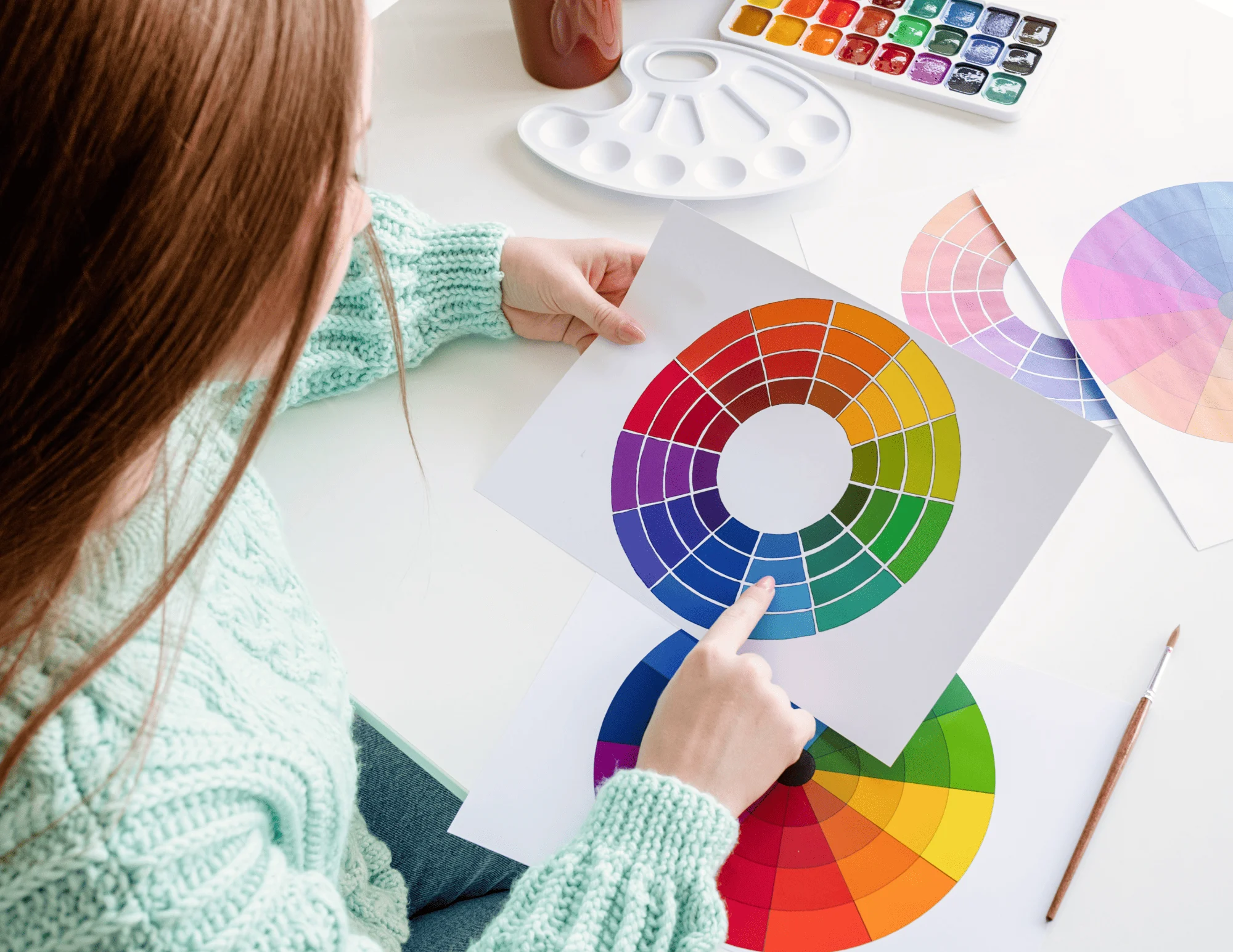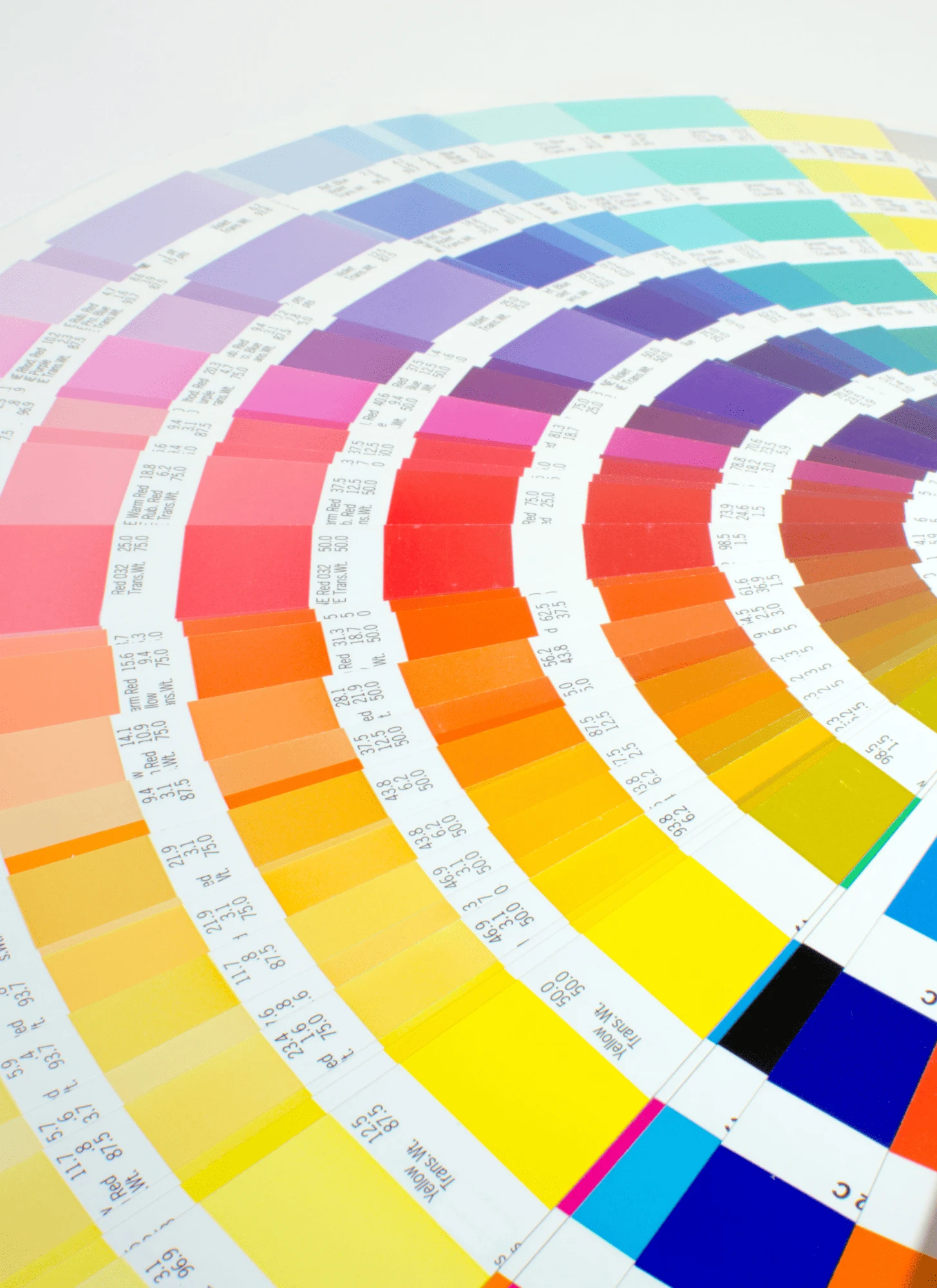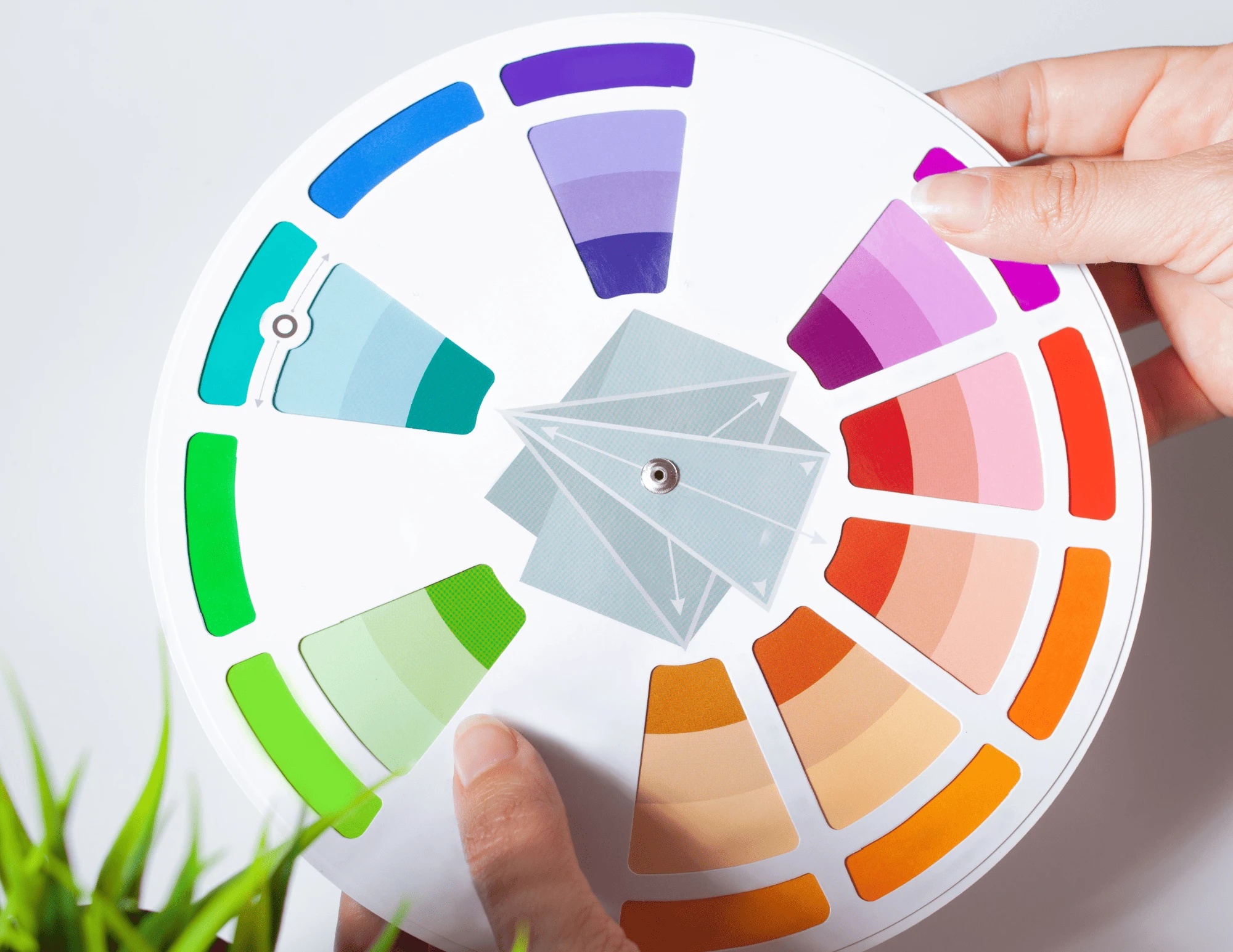
Photo credit: Canva
By using this site, you agree to our Terms of Use. This post may contain affiliate links. Read our disclosure policy.
Follow us on Instagram for more fun ideas for kids!
Color perception is innate in children from the moment they are born. They are able to tell the difference between red and green, or blue and yellow, without having been taught the distinction.
In visual arts, color theory is a branch of study that examines the use of color in relation to the effect it has on human emotions. The color wheel is one of the best tools for teaching color theory to children.
The color wheel is a circle that is made up of various shades of color. Each color has its own set of characteristics and connotations, like a rainbow.
For example, the color red is associated with danger, whereas the color blue is associated with calmness. Yellow is associated with happiness, whereas black is associated with mystery and enigmatic.
Let’s take a deeper look at the different approaches you can use to teach your children about color theory and see what you find.
What Color Theory is and Its Main Principles
Color theory is the study of how colors interact with one another and with the environments in which they are placed. Red, yellow, and blue are the primary colors, and these colors can be combined to form secondary colors.
Red, yellow, and blue are the three primary colors. As a result, when the primary colors are mixed together, they have a tendency to cancel out the effects of one another. When the colors red and yellow are combined, they form the color orange, for example.
Creating a black color is accomplished by mixing together all three primary colors in a single mixture. When two primary colors are combined in a single mixture, the secondary colors are produced.
They are referred to as additive colors because, when combined, they increase the overall brightness of the composition.
The Importance of Teaching Kids about Color Theory
As any artist is well aware, a thorough understanding of color theory is required in order to produce successful paintings and other works of art.
Color theory can be used to assist artists in selecting the appropriate colors for their projects, as well as to serve as a guide for mixing and matching different colors.
While children are often drawn to objects that are bright and colorful, they may not have a clear understanding of how colors interact with one another.
As a result, teaching children about color theory can aid in the development of their artistic abilities and the creation of more harmonious works of art.
Furthermore, children who learn about color theory from an early age will be better prepared to comprehend the complex visual world that surrounds them.
They will be able to see the world in a completely different light once they have a solid understanding of color theory.

Photo credit: Canva
Different Ways to Teach Kids about Color Theory
Explain the different colors and their meanings
There are a variety of approaches that you can use to teach children about color theory. One method is to explain the various colors and their respective meanings.
Using the color red as an example, you could explain that it represents passion and love, whereas blue represents calmness and tranquillity.
Also possible is to teach children about the various primary and secondary colors, as well as how these colors can be combined to create new hues.
Have kids mix colors together to see what happens
Children, even the youngest of them, are captivated by the beauty of colors. Upon beginning their exploration of the world around them, they quickly discover that certain objects have a consistent color throughout.
The color of a stop sign is always red, the color of the grass is always green, and the color of the sky is always blue. They may not be aware, however, that these colors can be combined to create a variety of new hues.
One method of teaching children about color theory is to have them combine different colors. They can, for example, combine red and yellow paint to make orange, or blue and green paint to make teal by mixing the two colors together.
As they experiment with different color combinations, they will gain a better understanding of how colors interact with one another. In addition, they may be surprised by the wide variety of colors that can be created for their project!
Compare and contrast different colors
Another option is to concentrate on the fundamentals of color mixing, such as how red and yellow combine to form orange or blue and yellow combine to form green. This approach can be beneficial in providing children with a solid foundation upon which to build their future.
Exploring the various optical illusions that can be created with color is yet another option to consider. For example, by arranging two different colors next to each other, it is possible to create the appearance of a third color.
This can be a fun way to introduce children to the concept of complementary colors in a non-threatening manner.
Draw pictures using only certain colors
One of the best ways to teach kids about color theory is to have them draw pictures using only certain colors. For example, you could give them a blue crayon and a white piece of paper and tell them they can only use those two colors.
This will teach them about the different shades of blue that they can create, and how white can be used to lighten or brighten a color.
You could also have them mix the two colors together to create different effects. This activity will help kids to understand the basics of color theory, and it will also be a lot of fun!
Kids can also be given a picture to color, but they can only use certain colors. For example, if they are given a picture of a sunset, they could only use the colors red, orange, and yellow.

Photo credit: Canva
Get kids to paint objects in different colors
A popular method that has been shown to be effective is to have them paint different colored objects on a white background.
For example, they could start with a simple color scheme consisting of red, yellow, and blue and then experiment with blending those colors to create new shades of the same color scheme as they went before.
As they gain more self-assurance in their abilities, they can broaden their color palette and experiment with the various effects that they can achieve with different colors and combinations of colors.
This hands-on approach can be a fun way for children to learn about color theory while also encouraging them to develop their own unique creative abilities.
Use a color wheel teach help kids how colors work
Using a color wheel to teach children about color theory is a useful tool that can be applied in a variety of situations. Basically, it’s just a circle with sections cut out of it, each section representing a different color on the visible spectrum. We love using wheels, in general, to teach anything from color to the weather!
Because red and yellow are diametrically opposed to each other on the color wheel, they can be combined to form the color orange when combined.
The color wheel can also be used to demonstrate the many different interactions that different colors have with one another and with one another’s colors.
Complimentary colors, for example, are colors that are opposite one another on the color wheel and are complementary to one another. By arranging these colors next to each other in a group, they can create an eye-catching effect.
Takeaway
To help kids understand color theory, there are a number of different activities that can be done. Some of the most popular methods include having them mix colors together to create new shades, painting objects in different colors, and using a color wheel to show how colors work.
These kids’ crafts are fun and educational, and they can help kids to develop their creative skills.
Some of the most popular methods include having kids mix colors together to create new shades, painting objects in different colors, and using a color wheel to show how colors work.
Agnes Hsu is a mom of three and has been inspiring parents and kids to get creative with easy activities and family friendly recipes for over 10 years. She shares her love for creative play and kids food to her 2MM+ followers online. Agnes' commitment to playful learning and kindness has not only raised funds for charity but also earned features in prestigious nationwide publications.

